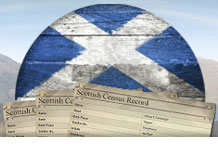Family History
Articles
How to Search for Ancestors
By now you have grown your tree as far as you can with what your memory, your relatives' recollections and any photos you have can offer. For some people this is already 30 or 40 people, especially if you have step-siblings, and lots of cousins. But if your tree still only has five people or fewer in it, it doesn't mean you can't discover your roots with a bit of help from the internet.
There are two ways to discover more generations of your family history. This guide will cover original records and how to search census, birth records and more later. But alongside this it's worth trying a different, and potentially far easier, route.
Sharing information of Genes Reunited

Genes Reunited enables you to search for other family trees which appear to have cross-overs with your own. This is one of the unique benefits of the web; its scale allows people to come together and collaborate in numbers never possible before. Genes Reunited has more than seven million people building their family trees, creating a collection exceeding 150 million individuals. The site lets you search for your relatives in all of those other trees, helping your spot areas where your tree overlaps with someone else's. In this way, the jigsaw piece of your tree is connected with the family trees, both great and small, of millions of others across the country and the globe.

The easiest way to tap into this huge internet resource of family trees is to search for the oldest person currently in your tree. If you think of the way the large families of the 19th century grew; a husband and wife having 10 children in 1880 could easily have more than 640 descendants - including more than 400 people alive today. Therefore a large number of people will share at least two common ancestors in their tree - and that's only one branch! The possibilities for finding other people with your ancestors in their family trees is almost endless.
Once you've identified what looks to be your great-grandmother, for example, in another family tree, you send a message to the person who built that tree. You are most probably sending a message to a stranger (albeit one who is in fact a distant cousin) so Genes Reunited doesn't reveal your email address or any of your personal details. This privacy and anonymity is especially useful if you are making the huge step of emailing someone who could be your birth parent for example - it makes it easier to control the pace of your contact.
By exchanging messages with another person you are able to:
- Verify that it is the same person in both of your trees by comparing places, dates and immediate family.
- Find out if their tree contains parts of your family history you haven't yet discovered.
- Share memories of older generations that might have passed down each branch of your family.
- Share any photos of each other's family you might have. Once you've established a common relative, you can share access to family trees and grow your own tree with the information you have shared. If you have information about your immediate family on your tree that you don't wish to share, such as birthdays or photos, use the 'hide living relatives' tool before you share your family tree. You always have total control of to whom you show your tree.

